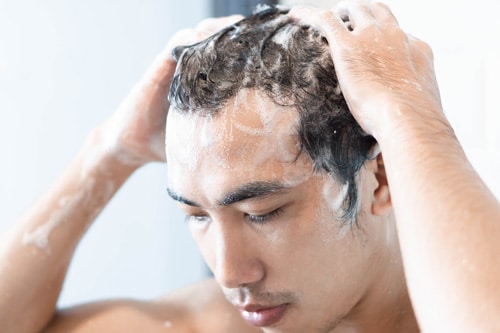Key points
- Maintaining a healthy scalp and hair through good hygiene and proper hair care can help prevent and control certain conditions and discomfort.
- Use soap and clean, running water to remove dirt, oil, and unwanted residue from your head.

Overview
Break up the buildup
Like the rest of your skin, the scalp produces a natural oil called sebum that moisturizes and protects your skin from infection. Some people produce more sebum than others. When the body produces too much sebum, it can build up on your scalp. If you shower less frequently, dead skin, dirt, product residue, and sweat may also build up on your scalp. This can result in greasy hair, increased risk for infection, and unpleasant odor. Practice these habits to improve your scalp and hair care routine:
- Use an exfoliator on the scalp to break up the buildup
- Select a shampoo and conditioner that work for your hair type
- Wash your hair regularly
- Brush regularly to prevent tangled hair and to help break apart buildup
Washing your scalp helps control scalp conditions and infections
Ringworm on the scalp spreads through direct contact with an infected animal or person, or from the environment. Good hygiene practices, like not sharing combs, towels, or other personal items and washing your hands regularly, can help protect you.
Head lice spread most commonly by direct head-to-head (hair-to-hair) contact. However, much less frequently, they can spread through shared clothing or other belongings if lice eggs or lice are on them. Good hygiene practices are important for preventing and controlling the spread of head lice. For example, don't share combs, brushes, or towels. Machine wash clothes and linens, used by people with head lice, using the hot water laundry cycle and the high heat drying cycle.
